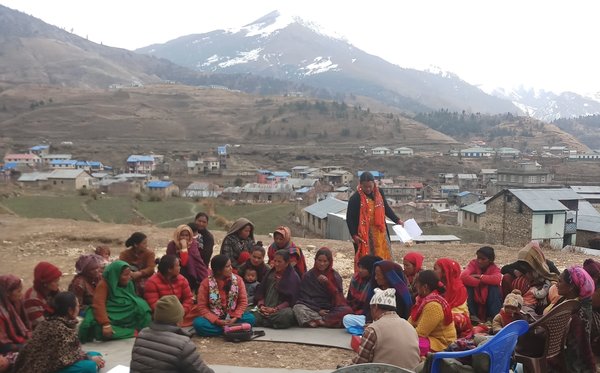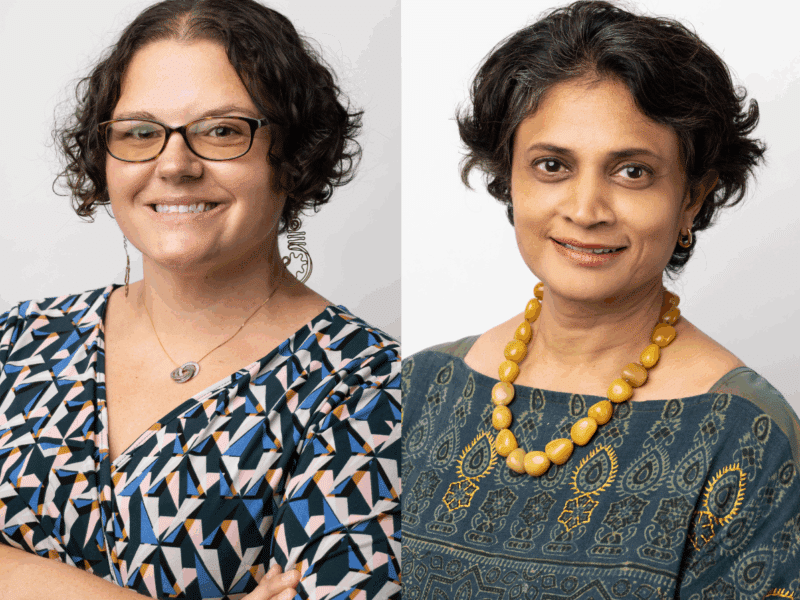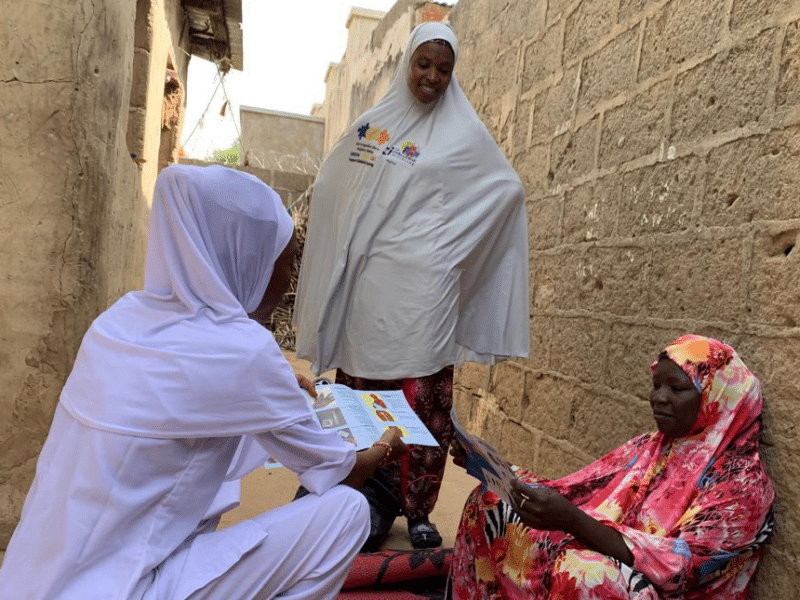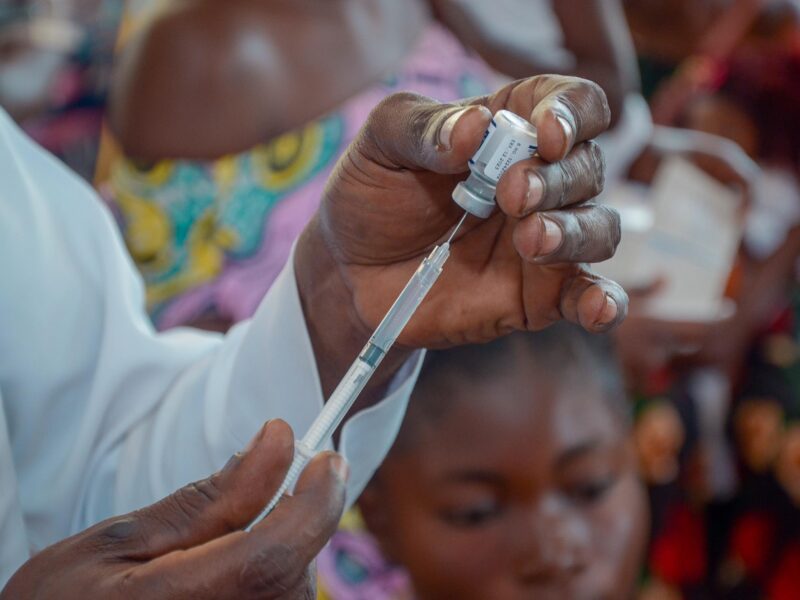In Barahatal Surkhet, the municipality bought two ambulances just to enable women with limited resources to make the trip to give birth at a health facility instead of at home.
In Guthichaur Jumla, the mayor and deputy mayor added heaters in all three of their birthing centers after it was identified as a key reason why pregnant women were reluctant to deliver at the local health facility.

Leaders in one community collect health information from residents.
In Panchapuri Surkhet, now that health workers are educating pregnant women and new moms, more women are making pre-natal doctor visits and are more carefully monitoring the growth of their children.
The changes in these three municipalities in Nepal – known as palikas in the local language – came about through a collaboration between local leaders and members of the Johns Hopkins Center for Communication Programs’ Breakthrough ACTION project. In the past, budgets might include line items for roads and hospitals and ambulances, but rarely did they include a key element in getting people to use the services provided: social and behavior change initiatives designed to raise awareness and practice among community members of the value of seeking care.
“Palika leaders have spoken to the people and heard their needs and have put money into their budgets to pay for health-related SBCC programs,” says CCP’s Sanjanthi Velu, who led the efforts in Nepal. “This is the ultimate test that this program works. It says there is full ownership from these palikas. And because we developed it with them, it’s not a bunch of theory. It’s very hands on.”
In 2017, the Nepalese government shifted to a federal structure, decentralizing its decision-making authority and giving budgetary power to the 753 palikas across the South Asian nation. USAID asked CCP to help strengthen this new system as it was being created.
This process was completed from the bottom up, the only way to ensure buy-in from the palikas themselves.
CCP worked with leaders of four palikas to understand how they make health care decisions and co-developed a system for getting input and data from their communities to plan and prioritize and budget. From these conversations, CCP developed a step-by-step tool, the SBC Palika Package, to improve the process and then tested it in those four communities.
It was so well received that all four palikas have written health-related SBCC into their new budgets and the government of Nepal shared the SBC Palika Package with all 753 palikas in the country. CCP is operating a Facebook page of interested palikas to assist them through the process of adopting health and health promotion. And NGOs throughout Nepal have asked to use the package as well in their work with palikas.
In one ward in Barahatal, the chair says that before the project began, pregnant women there would not go to the health facilities to deliver their babies, leading to significant health issues. But things have improved.
“Because of this project, a pregnant women’s group was formed, and interaction programs were organized with them, which helped identify the behavioral issues underlying institutional delivery for this target group,” the ward leader explained. “Due to the different programs conducted in this target group, the women who used to be shy are now openly talking about their issues and they have also started coming to the health facilities for delivery.”
Success stories like these are exactly why the palika package was developed.
“Because it was designed by the palikas, it is useful to them,” says CCP’s Caroline Jacoby, who also worked on the Nepal project. “This is giving them the skills to design and implement audience-focused local solutions for local problems. It’s a whole new way of operating.”




